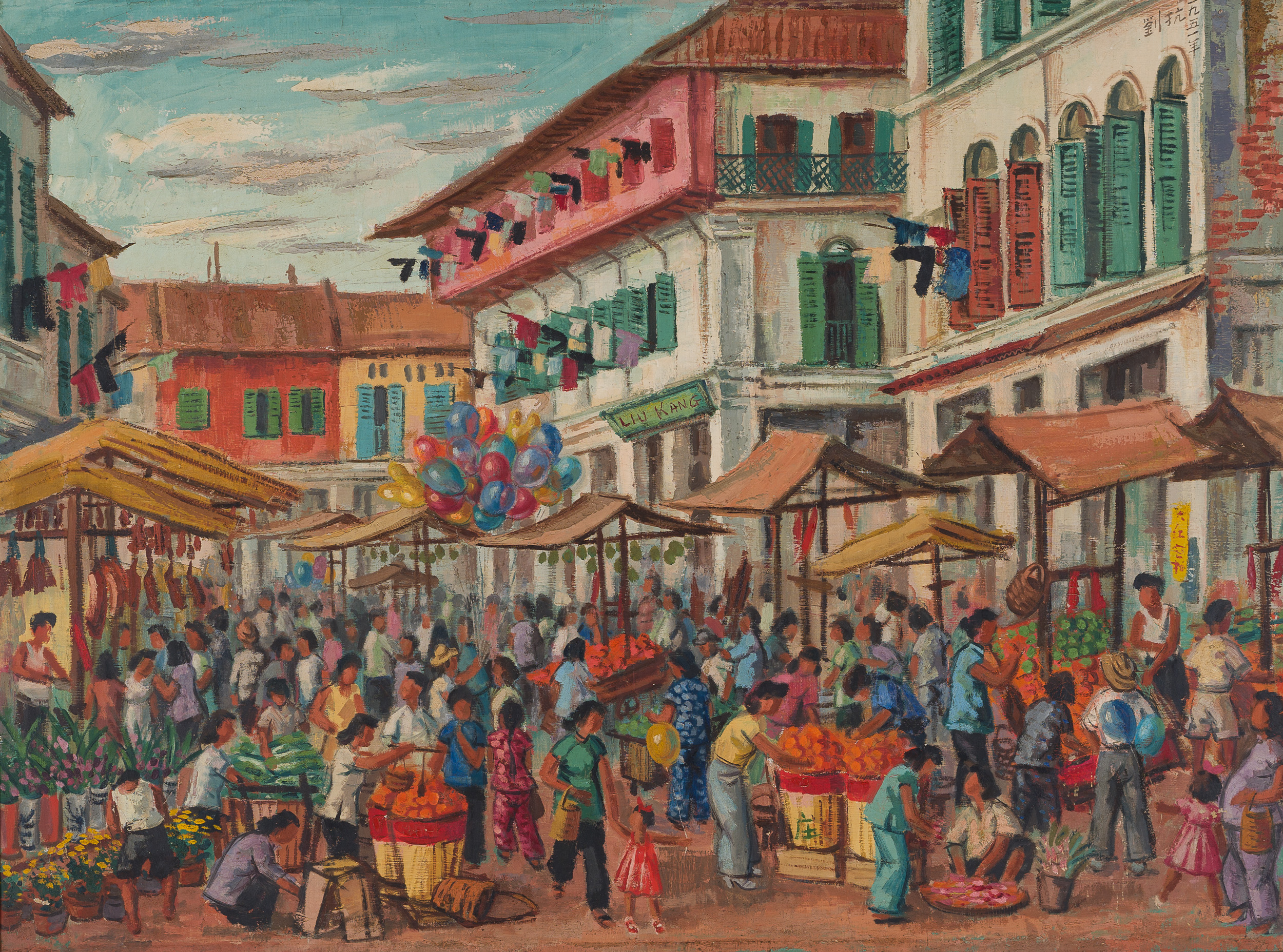Liu Kang is a Singaporean artist, founder of the Singapore Art Society. He is known as the creator of the Nanyang style (Chinese: 南洋, pinyin Nányáng, “South Seas”), in which scenes of tropical life were depicted with bright and wide strokes.
Liu Kang was born in Qing China, in the Yunchun directly administered region of the Quanzhou government of Fujian province, but spent his childhood in Johor, Malaysia, where his family moved. Returning to China in 1927, Liu Kang entered the Xinhua High School of the Arts (Chinese: 上海 新华 艺术 大学). His artistic style was strongly influenced by the work of Liu Haisu, the school’s rector. In 1928, Liu Kang left for France, where he studied at the École nationale supérieure des beaux-arts (French École nationale supérieure des beaux-arts). He often imitated the style of French modernists such as Cezanne, van Gogh and Matisse. In the 1930s, Liu Kang returned to China and taught at the Shanghai Graduate School of Fine Arts (Chinese 上海 美术 专科学校).
In 1937, at the start of the second Sino-Japanese War, Liu Kang was in Malaysia. Soon after, he moved to Singapore, where he created many works. In 1952, Liu Kang, Chen Zongrui, Chen Wanxi, and Zhong Sibin traveled to Bali to paint scenes of South Asian life. This journey gave Liu Kang a lot and served as the basis for some of his later works. In 1970, the Singapore government awarded him the Order of the Star of Public Service (Malay Bintang Bakti Masyarakat), and in 1996 – the Distinguished Service Medal (Malay Pingat Jasa Gemilang).
Liu Kang continued to paint from 1935 to 1997, and in May 2003, at the age of 92, handed over a thousand of his paintings and sketches to the Singapore Art Museum.

